The history of healthcare in Rochester is linked to the devotion of its women to the community. Here a few biographical sketches of the women who contributed to our healthcare.
Pioneers in Rochester Healthcare
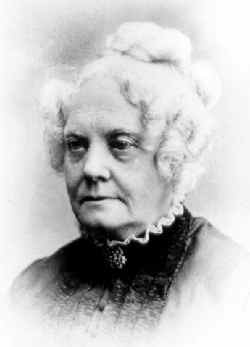 Mrs. Maltby Strong was President of the Rochester Female Charitable Society when the City Hospital Directors asked it to run the Hospital. She became the first President of the Board of Lady Managers, a position which she held for the next quarter of a century.
Mrs. Maltby Strong was President of the Rochester Female Charitable Society when the City Hospital Directors asked it to run the Hospital. She became the first President of the Board of Lady Managers, a position which she held for the next quarter of a century.
 Margaret Durbin Harper Sibley was born in 1851, the only child of Fletcher Harper and Margaret Durbin, and the granddaughter of Fletcher Harper, founder of Harper Brothers Publishing Company. On February 6, 1873, she married Hiram Watson Sibley (1845-1932) whose father founded the Western Union Telegraph Company. They continued to live in New York City for many years. Their first child, Margaret Harper Sibley, died there in 1874.
Margaret Durbin Harper Sibley was born in 1851, the only child of Fletcher Harper and Margaret Durbin, and the granddaughter of Fletcher Harper, founder of Harper Brothers Publishing Company. On February 6, 1873, she married Hiram Watson Sibley (1845-1932) whose father founded the Western Union Telegraph Company. They continued to live in New York City for many years. Their first child, Margaret Harper Sibley, died there in 1874.
Mrs. Sibley was active in charities both in Rochester and in New York City. She was a charter member of the YWCA board in New York and its first secretary. For more than 45 years she was a member of the board of supervisors of The Genesee Hospital and for 25 years was board president. When she resigned in February 1929, she was made honorary president for life. She was the first president of the Nurses Training School board and continued in that office until elected president of the board in 1904. Along with her husband, she provided the funds to erect a building known as the "Brothers Cottage" for treatment of contagious diseases. This building was dedicated to the memory of her two children, John Durbin Sibley and Hiram Sibley, Jr. who died of diphtheria. In 1916 they remodeled the building to be used as a laboratory of pathology. Mrs. Sibley built the first children's ward and furnished it and also the first nurses' home. In addition to this, the greatest expenditure was for the Sibley Pavilion, that housed many of the hospital's private patients.
She took an interest in the training school and its pupils that continued long after she resigned as president of the board. In the early days, when the number of nurses was small, she often made a practice of becoming personally acquainted with each young woman entering. She provided the Margaret Harper visiting nurse from 1891 to 1915 in memory of her mother.
Mrs. Sibley died on May 28, 1939, at her home in New York City. She also maintained a home at 384 East Avenue in Rochester. At the time of her death, at age 87, she was survived by her three children, Ruth Sibley Gade, Margaret Urling Sibley Iselin and Fletcher Harper Sibley, former president of the United States Chamber of Commerce. The week of her funeral saw the lilacs in bloom, the Memorial Day parade and the graduation of the class of 1939 from The Genesee Hospital School of Nursing.
Pat Mims
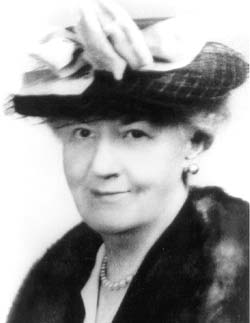 Marion Bradley Baker left a legacy to Rochester General Hospital far greater than the value of money. During her forty-eight years of dedicated service to the hospital, she took a group of loosely knit volunteers and forged them into an organization that gained national notoriety for their hospital work. The Volunteer Aide Service, or "Rochester Plan" as it was called outside Rochester, became the model for many hospital volunteer organizations throughout the United States. Marion Baker was born in 1877, the daughter of Charles S. Bradley, an associate of Thomas A. Edison. She was a talented artist, as illustrated by her surviving artwork and collection of dioramas depicting hospital departments.
Marion Bradley Baker left a legacy to Rochester General Hospital far greater than the value of money. During her forty-eight years of dedicated service to the hospital, she took a group of loosely knit volunteers and forged them into an organization that gained national notoriety for their hospital work. The Volunteer Aide Service, or "Rochester Plan" as it was called outside Rochester, became the model for many hospital volunteer organizations throughout the United States. Marion Baker was born in 1877, the daughter of Charles S. Bradley, an associate of Thomas A. Edison. She was a talented artist, as illustrated by her surviving artwork and collection of dioramas depicting hospital departments.
Her interests were varied and included many social work agencies. Realizing the importance of preserving Rochester General's rich history, she began collecting material for an archives in the early 1940s. With a group of Exhibit Volunteers, she set up exhibits on Hospital Departments and history to educate both staff and public. She fought to preserve this material through the change-over from Westside in the mid-1960s. The Baker-Cederberg Museum and Archives is named in her honor. Married to William J. Baker, who pre-deceased her, Mrs. Baker died June 14, 1968, at the age of ninety-one.
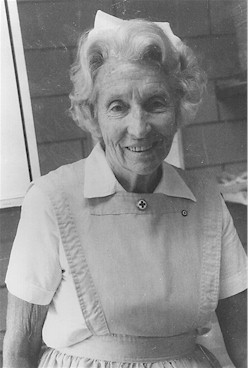 Born in 1901, Agnes Bartlett Curtis accompanied her orthopedist stepfather, Dr. Ralph Fitch, and her volunteer nurses aide mother to France in 1914 for service in World War I. Mature for her age, and needed, she served that hospital for five years, and began a lifelong association with medical institutions. Returning to Rochester in 1920, she served RGH as a volunteer in the Eye Clinic, the Well Baby Clinic, and then the old Westside Division Emergency Department two days each week for twenty years.
Born in 1901, Agnes Bartlett Curtis accompanied her orthopedist stepfather, Dr. Ralph Fitch, and her volunteer nurses aide mother to France in 1914 for service in World War I. Mature for her age, and needed, she served that hospital for five years, and began a lifelong association with medical institutions. Returning to Rochester in 1920, she served RGH as a volunteer in the Eye Clinic, the Well Baby Clinic, and then the old Westside Division Emergency Department two days each week for twenty years.
Agnes married Edward Peck Curtis, Sr., a WWI flying ace and future vice-president of Eastman Kodak in 1924. With the onset of World War II, the Curtis family returned to military service. Mr. Curtis became Major General Curtis, serving Dwight Eisenhower, and Mrs. Curtis became administrative assistant of the Eastern Area American Red Cross. Mrs. Curtis organized, trained, and placed volunteer nurses’ aides in nursing services weakened by the departure of personnel for military service. When she arrived, 400 aides had been placed. When she departed at war's end, 40,000 had been placed.
Returning to Rochester, she resumed volunteer service to Rochester General Hospital, as had her mother and sister. Weekly service to the Emergency Department continued from the forties through the eighties. She became president of the Women's Board, as had her mother and sister and she became the first woman representative to the Board of Directors in the 100 year history of the institution.
In 1984 Mrs. Curtis was the recipient of an Award of Merit from the Rochester Academy of Medicine for meritorious volunteer community achievements. The following year Rochester General Hospital's Foundation honored her with its Second Founders Society award for over 70 years of volunteer service. After a long life of community dedication Agnes Bartlett Curtis died at the age of 96 after an extended illness. A reception area in the J. Raymond Hinshaw Medical Education Center and a conference room in the Emergency Department are named for her (courtesy Robbie Baltzer and William A. Africano, MD)
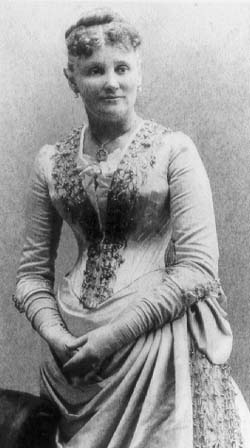 Isabella Graham Hart established a family tradition of commitment to Rochester City/Rochester General Hospital that has lasted for over a century. Born in Rochester on September 16, 1836, she was the daughter of Caroline and Elias Pond. In 1862 she married James C. Hart, and they subsequently had two daughters, Ruth (Mrs. Ralph R. Fitch) and Isabel (Mrs. George B.D. Bonbright).
Isabella Graham Hart established a family tradition of commitment to Rochester City/Rochester General Hospital that has lasted for over a century. Born in Rochester on September 16, 1836, she was the daughter of Caroline and Elias Pond. In 1862 she married James C. Hart, and they subsequently had two daughters, Ruth (Mrs. Ralph R. Fitch) and Isabel (Mrs. George B.D. Bonbright).
Mrs. Hart was appointed to the Board of Lady Managers in 1886, setting the pattern of involvement in volunteer activities. When she died in 1898, her husband established an endowment and donated the funds for the construction of the Isabella Graham Hart Nurses’ Home to commemorate her devotion to filling the Hospital’s needs. A central focus of the Home was a Tiffany stained glass window memorializing Mrs. Hart.
Other family members who continued the tradition include her brother, Charles F. Pond, who actively served as a director from 1878 to 1929, and Dorothy Robinson Macomber, a long-time member of the Women’s Board and its President from 1935 to 1937. The family has continued to take leadership roles in the Hospital as Twigs, Board members, and volunteers throughout the twentieth century.
The 1993 Century of Service Award formally recognized the family’s long-standing involvement in the welfare of the Hospital. (Hart Family Archives)
 Sarah Olivia Dewey Perkins was a moving spirit in the interests of the Rochester City Hospital for over forty-six years. A member of the Female Charitable Society and member of the Board of Lady Managers since the Hospital's opening, she guided it through the rapid changes in healthcare in the late nineteenth-century. She held the position of Treasurer for most of the time she was with the Managers, and served as President (1889-1893). Mrs. Perkins was born in Pittsfield, Massachusetts, November 30, 1827.
Sarah Olivia Dewey Perkins was a moving spirit in the interests of the Rochester City Hospital for over forty-six years. A member of the Female Charitable Society and member of the Board of Lady Managers since the Hospital's opening, she guided it through the rapid changes in healthcare in the late nineteenth-century. She held the position of Treasurer for most of the time she was with the Managers, and served as President (1889-1893). Mrs. Perkins was born in Pittsfield, Massachusetts, November 30, 1827.
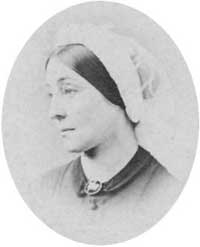 In 1848 she married William H. Perkins who died ten years later. She never remarried. The Perkins had two children. Sarah Dewey Perkins died August 1, 1911 after a long and full life of ninety-four years. (Hospital Review, August 1911.)
In 1848 she married William H. Perkins who died ten years later. She never remarried. The Perkins had two children. Sarah Dewey Perkins died August 1, 1911 after a long and full life of ninety-four years. (Hospital Review, August 1911.)
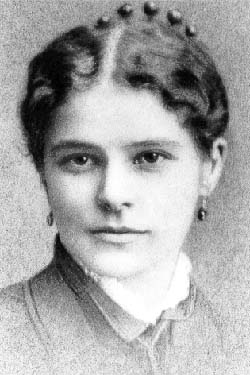 Lois Elliot Whitney, the founder of the Twigs, was born March 31, 1850. A daughter of a prominent miller, she attended local schools and studied art in Paris. Renowned for her artistic capabilities, she was founder of the Art Exchange, an organization dedicated to furthering art education in the city. Upon the death of her mother she was appointed to the Board of Lady Managers in 1885. Her dedication to the hospital manifested itself initially through her work staging entertainments for the Annual Donation, and later through the Twigs.
Lois Elliot Whitney, the founder of the Twigs, was born March 31, 1850. A daughter of a prominent miller, she attended local schools and studied art in Paris. Renowned for her artistic capabilities, she was founder of the Art Exchange, an organization dedicated to furthering art education in the city. Upon the death of her mother she was appointed to the Board of Lady Managers in 1885. Her dedication to the hospital manifested itself initially through her work staging entertainments for the Annual Donation, and later through the Twigs.
Miss Whitney's life was cut short when she died March 8, 1889, from peritonitis. (Hospital Review, March 1889)
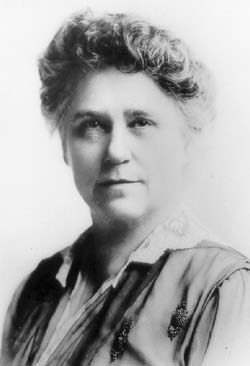 Marion Craig Potter, M.D., was the first woman physician to be appointed to the Rochester City Hospital. She began practice in the Out Patient Department on May 31, 1898. Marion's father, Dr. James W. Craig, a physician in Churchville, New York, had three daughters who became doctors. Marion graduated from the University of Michigan Medical School with her sister Sara in 1884.Dr. Potter practiced in Rochester for most of her career. Many of the community's leading women were her patients. During her fifty years of practice, she was commended for her pioneer work in preventive medicine.
Marion Craig Potter, M.D., was the first woman physician to be appointed to the Rochester City Hospital. She began practice in the Out Patient Department on May 31, 1898. Marion's father, Dr. James W. Craig, a physician in Churchville, New York, had three daughters who became doctors. Marion graduated from the University of Michigan Medical School with her sister Sara in 1884.Dr. Potter practiced in Rochester for most of her career. Many of the community's leading women were her patients. During her fifty years of practice, she was commended for her pioneer work in preventive medicine.
She was a prolific writer and editor of the Women's Medical Journal and a member or founder numerous medical and women's organizations.
She married Dr. Ezra B. Potter in 1893. They had one son, James Craig Potter. Marion Craig Potter died March 23, 1943. Dr. Potter's son, James Craig Potter, and granddaughter Marion Craig Potter, Jr., continued the family tradition, giving the family over 300 years in medical practice. (Women's Medical Journal, Times Union, and Democrat and Chronicle)
Nursing Pioneers
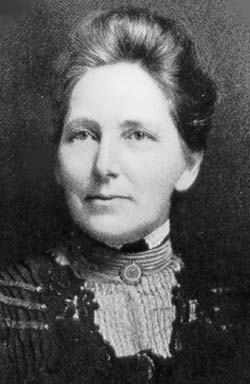 When forty-three-year-old Sophia French Palmer became Superintendent of Rochester City Hospital, she came to an institution in turmoil. Her predecessor had been removed for "the good of the hospital," the Nursing School was in disarray, and the hospital had a deficit. Miss Palmer was born May 26, 1853, in Milton Massachusetts. She graduated from the Boston Training School of Nurses (Massachusetts General Hospital School of Nursing) in 1878. For the next eighteen months, she did private duty in Philadelphia for the noted neurologist S. Weir Mitchell. In 1883, she was appointed Superintendent of St. Luke's Hospital in New Bedford, Massachusetts, where she established a school of nursing. She returned to Boston in 1886 as Charge Nurse at Massachusetts General. During this period, she obtained post-graduate experience.
When forty-three-year-old Sophia French Palmer became Superintendent of Rochester City Hospital, she came to an institution in turmoil. Her predecessor had been removed for "the good of the hospital," the Nursing School was in disarray, and the hospital had a deficit. Miss Palmer was born May 26, 1853, in Milton Massachusetts. She graduated from the Boston Training School of Nurses (Massachusetts General Hospital School of Nursing) in 1878. For the next eighteen months, she did private duty in Philadelphia for the noted neurologist S. Weir Mitchell. In 1883, she was appointed Superintendent of St. Luke's Hospital in New Bedford, Massachusetts, where she established a school of nursing. She returned to Boston in 1886 as Charge Nurse at Massachusetts General. During this period, she obtained post-graduate experience.
Her next position was Superintendent of Nurses at Garfield Memorial Hospital in Washington, D.C. Overcoming opposition from the city's physicians, she established the hospital's Training School.
In 1896 she became Superintendent of Rochester City Hospital. Miss Palmer was in the forefront of professionalism and nursing reform. She was instrumental in the organization of the New York State Nurses Association and the Genesee Valley Nurses Association. Through her energies, legislation was passed in New York State for registration of nurses. The title "Registered Nurse" was coined during an alumnae meeting at Rochester City Hospital. She was appointed the first President of the New York Board of Examiners. In 1900, she became the first editor of The American Journal of Nursing. She would hold this position until her death in 1920. (Courtesy A. J. N.)
 Eva Allerton, the second Superintendent of The Rochester Homeopathic Hospital, was born at Mount Union, Ohio on December 15, 1853. She graduated from the Boston Training School for Nurses (Massachusetts General Hospital School of Nursing.) in 1885. As a graduate nurse she worked for Dr. S. Weir Mitchell of Philadelphia. She later returned to Massachusetts General as Night Superintendent. After a brief stint as superintendent of the training school of the Alleghany General Hospital she became superintendent of the Rochester Homeopathic Hospital (The Genesee Hospital) February 22, 1890.
Eva Allerton, the second Superintendent of The Rochester Homeopathic Hospital, was born at Mount Union, Ohio on December 15, 1853. She graduated from the Boston Training School for Nurses (Massachusetts General Hospital School of Nursing.) in 1885. As a graduate nurse she worked for Dr. S. Weir Mitchell of Philadelphia. She later returned to Massachusetts General as Night Superintendent. After a brief stint as superintendent of the training school of the Alleghany General Hospital she became superintendent of the Rochester Homeopathic Hospital (The Genesee Hospital) February 22, 1890.
Miss Allerton brought an “unusual executive ability” to the Rochester Homeopathic Hospital. She succeeded in getting its school of nursing incorporated in 1891. “In a large measure it was through her devotion the hospital” that it became a leader in Rochester’s healthcare community.
Through her tireless work in the professionalization of nursing she was part of the establishment of the American Society of Superintendents of Training–Schools for Nurses, New York State Nurses Association and the Monroe County Nurses Association.
Miss Allerton was active in the movement to pass the nurse practice act, the “Armstrong Bill”, that provided for the registration of nurses in New York State. She was chairman of the NYS Nurses Association Legislative Committee that led the way for passage of the act. This work was done under considerable strain causing exhaustion, and possibly contributed to her untimely death at the age of 53 in 1907.
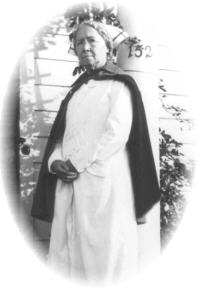 Ida Jane Anderson, RN
Ida Jane Anderson, RN
1869 – 1958
New York State’s First Registered Nurse
Oh, the graduates of 1902
We’re the kind
That were always true blue
Their work never shirking,
With no interne’s flirting,
Those nurses of 1902.
This class poem was composed in 1903 by Ida Jane Anderson while she was a student Rochester Homeopathic Hospital (later The Genesee Hospital) class of 1902. Ida Jane was a remarkable woman, with a nursing career spanning several decades. Most notably, she was the first registered nurse in New York State, receiving this distinction after the passage of the Nurse Registration Act in 1903.
Born January 12, 1869 in Napanee, Ontario, Canada Ida Jane spent her early years with her father, J. Luman Anderson, a shoemaker, and her mother Anna Eliza Mills Anderson, along with three brothers and three sisters. In July 1887, at the age of 18, she left Canada alone and came to the port of Charlotte, New York. Ida Jane settled in the city of Rochester, New York becoming a dressmaker. Her brother, Charles, followed three years later and went on to build a successful business manufacturing soft-soled baby shoes.
In June 1899, at the age of 30, she enrolled in the Rochester Homeopathic Hospital Nurses’ Training School. Living in the nurse’s residence on Alexander Street, she studied and worked long hours. She enjoyed her three years in nurses’ training as evidenced by her association with the alumni organization, the writing of the class poem, the class yell and class song.
After her graduation in 1902, her parents relocated to Rochester, living at 179 Henrietta Street with Ida Jane and their six-month-old granddaughter, Ila Anderson. Ida Jane, who never married, essentially stepped into motherhood and raised her niece, whose mother had died in 1903.
In the 1930’s, Ida Jane became a world traveler. When home in Rochester, she preferred to travel on foot and was an avid walker. She was also expert in crocheting and knitting.
Ida Jane Anderson spent much of her career in private practice. She was the first graduate nurse to become a night supervisor at the Rochester Homeopathic Hospital. Later she became the hospital’s second Social Worker in 1909. She also worked at Strong Memorial Hospital in the 1940s. During the Smallpox Epidemic of 1902 she nursed the victims at Hope Hospital. Throughout he career she remained active with the Alumni Association holding several offices.
Ida Jane died at Monroe Community Hospital in 1958 and is buried at Mt. Hope.
She donated her uniforms along with her hospital pins and other memorabilia to the Alumni Archives.
Contributed by Pat Mims
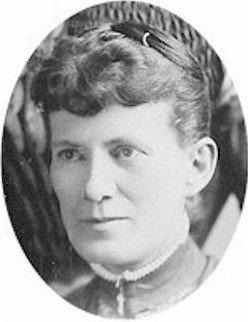 Dr. Marcena Sherman Ricker was a well-known and highly respected physician in her day. She was a graduate of Rochester City Hospital's Training School for Nurses. Born in Castile, New York on July 23, 1852, she began her adult career as a teacher. But after three years, she decided that serving the sick and the less fortunate was her calling. In 1880, she enrolled with City Hospital's first class of student nurses, graduating in 1884. Subsequently, she earned her M. D. degree at the Homeopathic Hospital in Cleveland, received post graduate training in New York City, and returned to Rochester in 1888 to establish a private practice that focused on women's and children's diseases.
Dr. Marcena Sherman Ricker was a well-known and highly respected physician in her day. She was a graduate of Rochester City Hospital's Training School for Nurses. Born in Castile, New York on July 23, 1852, she began her adult career as a teacher. But after three years, she decided that serving the sick and the less fortunate was her calling. In 1880, she enrolled with City Hospital's first class of student nurses, graduating in 1884. Subsequently, she earned her M. D. degree at the Homeopathic Hospital in Cleveland, received post graduate training in New York City, and returned to Rochester in 1888 to establish a private practice that focused on women's and children's diseases.
She was a member of the Lake Avenue Baptist Church, where she met her husband, Wentworth G. Ricker, a widower with two daughters and the founder of a Rochester manufacturing concern. They were married in June 1893. For the rest of their lives the Rickers would be among the most active lay leaders of their church. In addition, Dr. Ricker's inspiration and leadership led to the creation of the Fairport Baptist Home in 1904.
Although she had graduated from City Hospital's nurse training school, her preparation as a homeopathic physician precluded her practicing there. But rejection by her alma mater may not have been disappointing to the doctor. She was one of the first women to be appointed to the Rochester Homeopathic Hospital (Genesee Hospital).
Like many of her colleagues, Dr. Ricker considered tending the impoverished sick without charge as her moral duty. In 1894 she served as one of the volunteer medical staff members and a charter member of the Board of Managers of the Door of Hope, a home for unwed mothers on Troup Street. The doctor's tenure on the Board and on the medical staff of the Door of Hope lasted until the spring of 1912.
Marcena Ricker, M.D. gained distinction by caring for Susan B. Anthony in her final illness. Although she was not herself a suffragist, the physician had long been a close friend of Miss Anthony and her personal physician. It was Dr. Ricker who was the official spokesperson to the press, reporting daily on the condition of her famous patient during her final illness. And on March 13, 1906, it was Dr. Ricker's description of the suffragist's final hours that the New York Times relied on for its front-page coverage of Miss Anthony's death.
Dr. Ricker undertook many other activities in the service of the aged and disadvantaged, her patients, and her community. Other organizations that benefited from her leadership and active involvement include the YWCA and the WCTU. Dr. Ricker died on January 18, 1933.
By Teresa K. Lehr
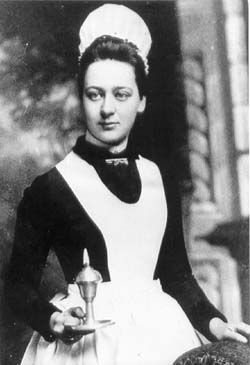 Mary L. Keith, "the outstanding woman in the field of hospital administration in America," was Superintendent of Rochester City Hospital (Rochester General) from 1901 to 1923. She was responsible for the reconstruction of the Hospital under the Eastman Gift of 1909 (Memorial 1948, Scrapbook Collection). Miss Keith was born in Elmwood, Massachusetts, on April 10, 1865. At age twenty, she entered Boston Training School for Nurses (later called Massachusetts General School of Nursing) over her parents' protests. She graduated in 1888. According to C. G. Parnell, M.D., the final note on her training record read, "Well-educated, refined, intelligent, thoroughly satisfactory throughout the course. Make an efficient head nurse."
Mary L. Keith, "the outstanding woman in the field of hospital administration in America," was Superintendent of Rochester City Hospital (Rochester General) from 1901 to 1923. She was responsible for the reconstruction of the Hospital under the Eastman Gift of 1909 (Memorial 1948, Scrapbook Collection). Miss Keith was born in Elmwood, Massachusetts, on April 10, 1865. At age twenty, she entered Boston Training School for Nurses (later called Massachusetts General School of Nursing) over her parents' protests. She graduated in 1888. According to C. G. Parnell, M.D., the final note on her training record read, "Well-educated, refined, intelligent, thoroughly satisfactory throughout the course. Make an efficient head nurse."
Between 1889 and 1901, Miss Keith held several managerial positions with Boston hospitals, completing the period as Director of Nursing for The Boston Lying-In Hospital. In 1901, she came to Rochester, replacing Miss Sophia Palmer. During her tenure at Rochester City Hospital, she established a formal Department of Nursing and oversaw the construction of a new, modern hospital, Rochester General Hospital. The project included building twelve new buildings on a campus of fifteen and doubling the bed capacity. She saw the Hospital through World War I, the Flu Epidemic, and labor strikes, as well as hiring the first social worker. Upon retirement after twenty-three years, she returned to her family home in Elmwood. She continued to be a civic leader, serving as president of the Village and Women's clubs and as a trustee of the East Bridewater Public Library. She was an avid amateur photographer, and left behind a record of her hometown as well as photographs of the Hospital. Miss Keith died April 3, 1948. (courtesy Patricia Keith Schnieder)
 Jessica Heal was considered the "dean" of supervising nurses in Rochester before her retirement in 1935. She was born in Somerset, England on May 18, 1868. In 1888 Miss Heal came to America. She received her nurses training at the Rochester Homeopathic Hospital, the forerunner of The Genesee Hospital. Upon graduation in 1896, Miss Heal worked as a private duty nurse for several years.
Jessica Heal was considered the "dean" of supervising nurses in Rochester before her retirement in 1935. She was born in Somerset, England on May 18, 1868. In 1888 Miss Heal came to America. She received her nurses training at the Rochester Homeopathic Hospital, the forerunner of The Genesee Hospital. Upon graduation in 1896, Miss Heal worked as a private duty nurse for several years.
In 1900, Miss Heal went to work at Lee's Private Hospital on Lake Avenue as the Hospital Superintendent. She was also the chief surgical assistant to Dr. John M. Lee and remained until 1905. In 1906, Miss Heal returned to the Rochester Homeopathic Hospital as the hospital's Superintendent of nurses following Eva Allerton's death and Maude L. Johnston's promotion to Superintendent of the hospital.
Miss Heal was one of the area's first Red Cross nurses. She was called upon to organize the nursing staff of the third Red Cross Hospital, Base Hospital 19, in 1915. The unit contained 25 nurses from Genesee and 25 from Rochester General Hospital. They were activated in February 1918 going on station at Vichy France where they served from July 1918 to February 1919.
Miss Heal retired on Nov. 1, 1935. Upon her retirement, The Genesee superintendent Dr. Leslie Wright praised her work and expressed his sentiment that her retirement was a great loss for the hospital and the community. The Genesee Hospital School of Nursing Alumni Association created the Jessica Heal Sick Fund in her honor to offset graduates’ hospital room expenses during illnesses. The Fund was viable over four decades and was discontinued in the late 1980s. Miss Heal died on February 20, 1961 at the age 93.
Chuck Ange
Philip G. Maples
